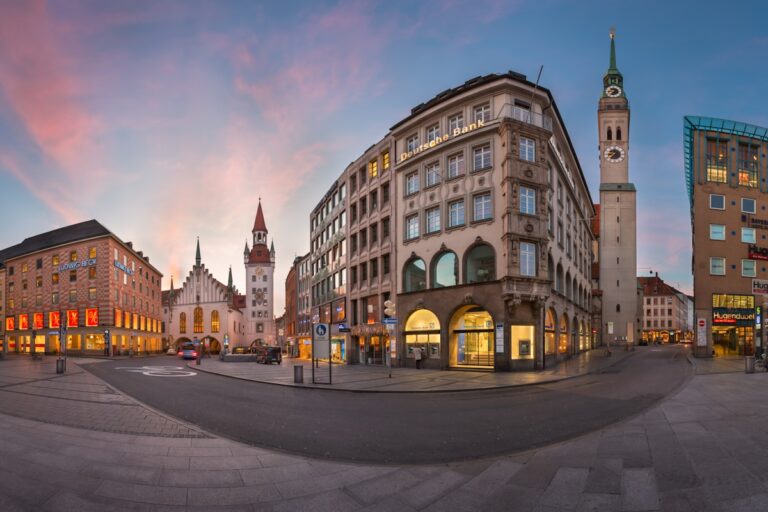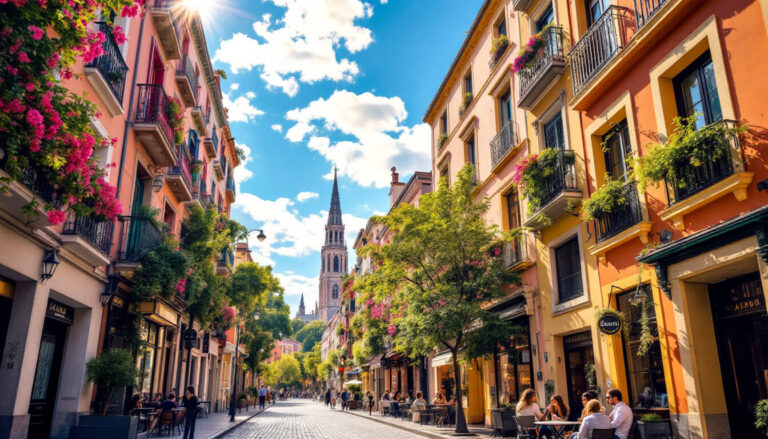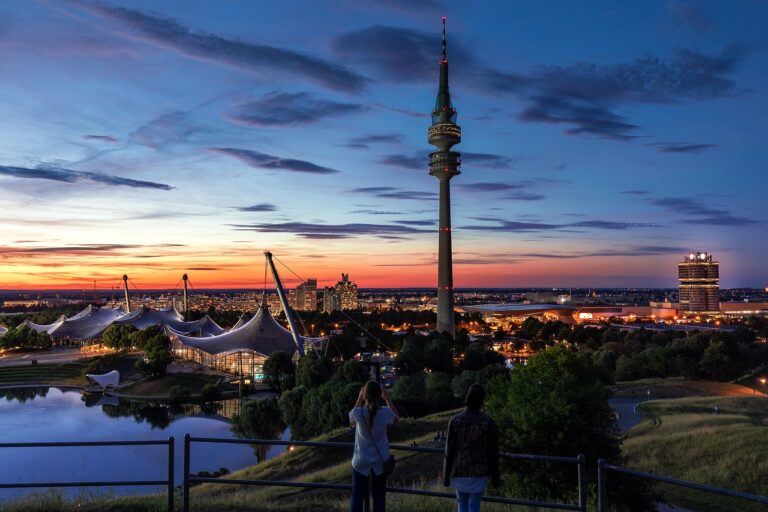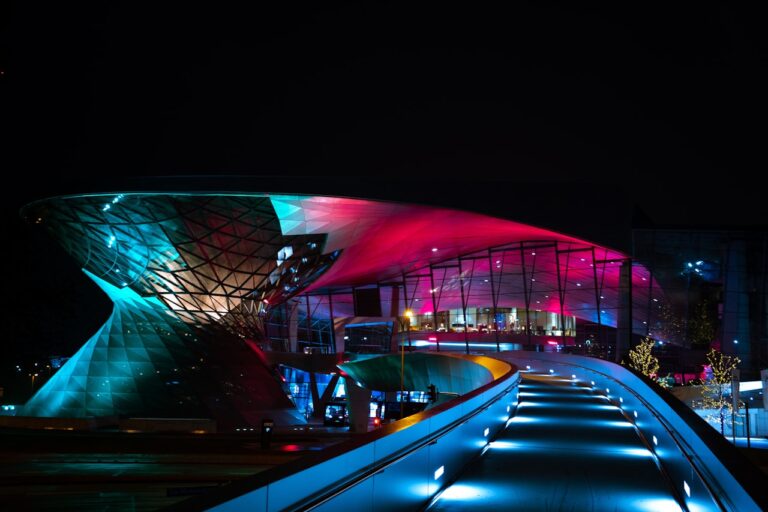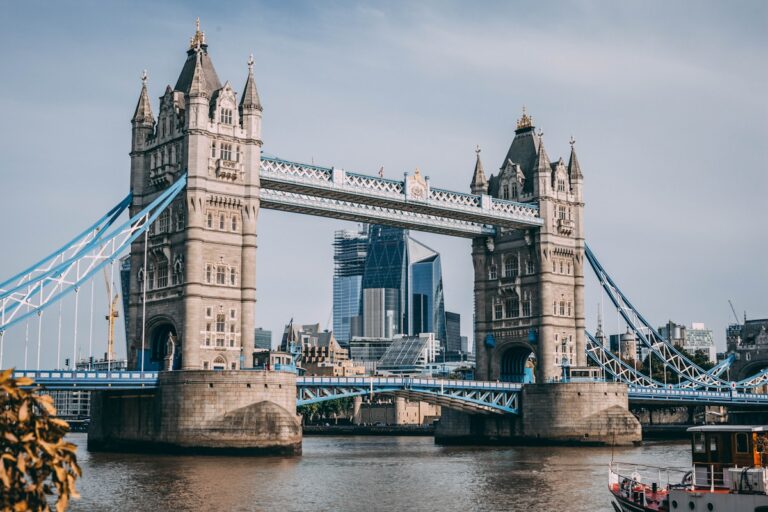Getting Around Amsterdam: How to Get Around Amsterdam
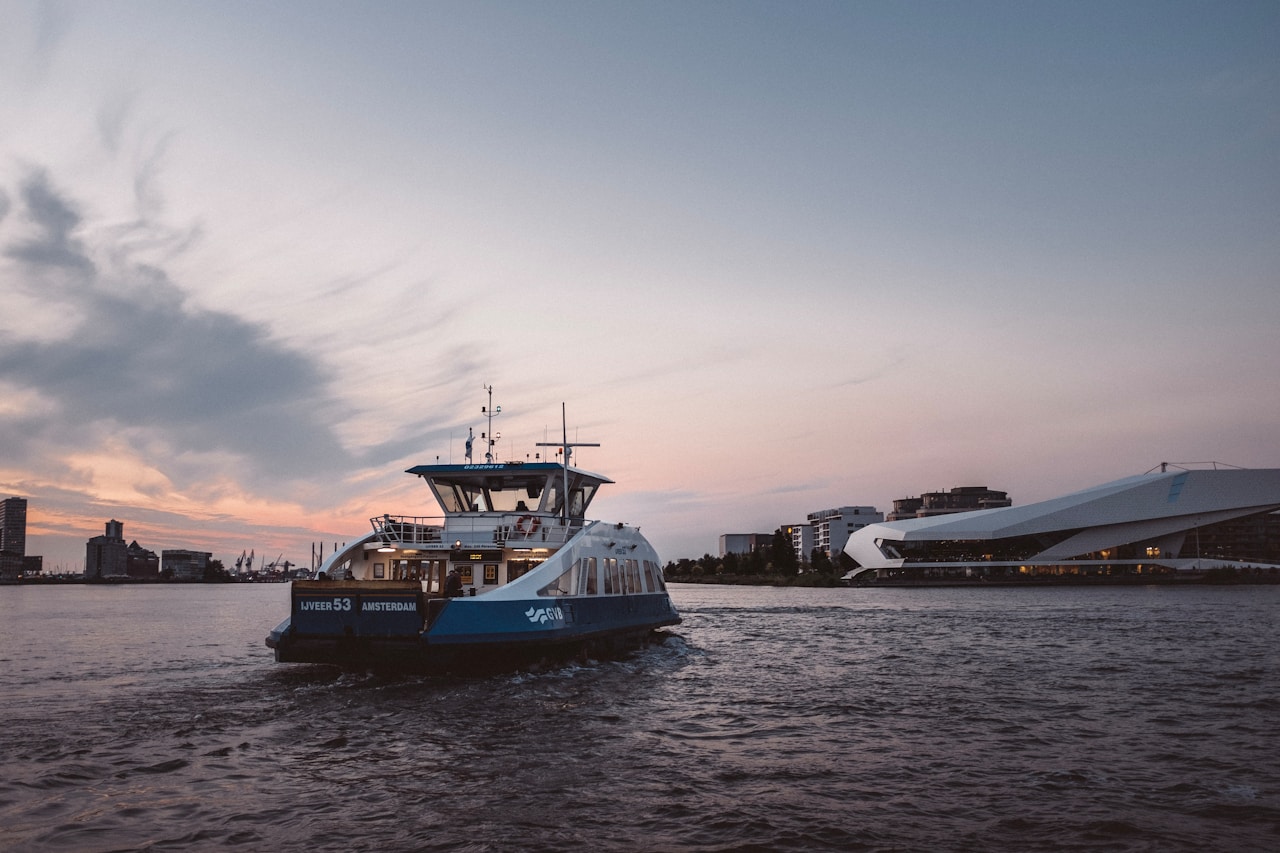
Amsterdam offers an integrated transportation system featuring trams, metros, buses, and free ferries.
- Understanding the Basics of Amsterdam Transportation
- Using the Amsterdam Tram Network
- Amsterdam Metro, Buses, and Ferries
- Bike Culture and Pedestrian Movement
- Using Taxis, Ride Shares, and Cars
- Saving with Amsterdam Travel Cards and Tickets
- Extra Tips for Public Transit and Nearby Excursions
- Getting Around Amsterdam at Night
- Wrapping Up
- Most Asked Questions
Visitors can purchase single tickets or multi-day passes for unlimited travel across all modes.
The extensive tram network connects major attractions while cycling remains the most authentic way to experience the city. While walking is ideal in the historic center, and taxis provide convenient alternatives.
The thorough public transit system makes traversing Amsterdam’s distinct neighborhoods effortlessly accessible to tourists and locals alike.
Key Takeaways:
Hide- Amsterdam’s integrated transportation system includes trams, metros, buses, and free ferries across the IJ River connecting to Amsterdam Noord. 🚋
- Purchase the Amsterdam Travel Card or GVB pass for unlimited rides on all transport modes throughout your stay. 🎟️
- Trams form the backbone of public transportation, running from early morning until midnight with night buses available thereafter. 🌙
- Cycling is the quintessential Amsterdam experience with extensive bike paths and rental options throughout the city. 🚲
- The city center is pedestrian-friendly, while taxis and ride-sharing services provide alternatives when public transport isn’t convenient. 🚖
Understanding the Basics of Amsterdam Transportation
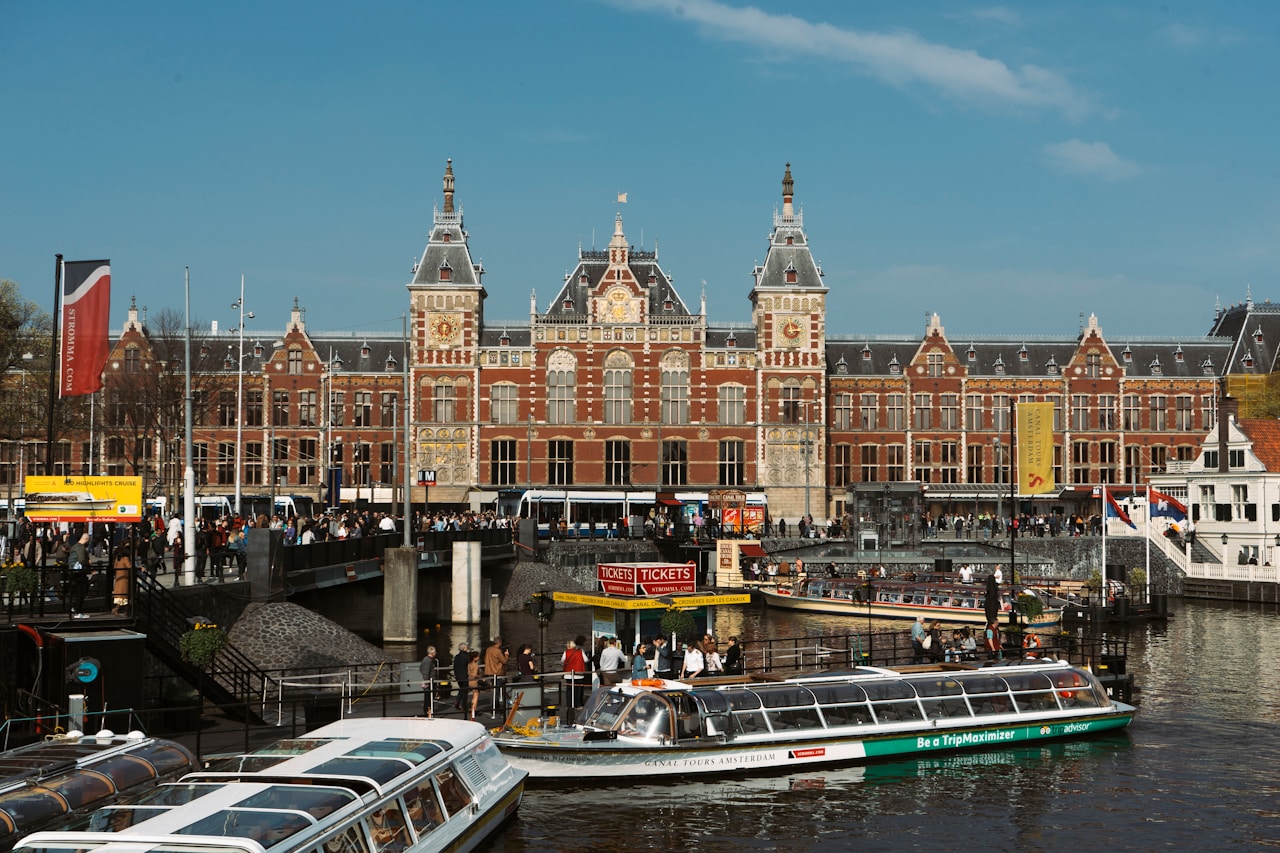
Amsterdam’s integrated transportation system offers visitors multiple efficient options for traversing the city, including trams, metros, buses, and ferries that operate on a unified ticketing system.
Tourists can purchase single-ride tickets or opt for more economical multi-day passes such as the GVR card or Amsterdam Travel Ticket, which provide unlimited access to public transport networks.
Before traveling, it’s wise to verify entry requirements with a Travel Visa Requirements Checker to ensure smooth arrival in the Netherlands.
Safety on Amsterdam’s public transportation is generally excellent, with well-lit stations, frequent service until late hours, and dedicated bicycle lanes throughout the city for those who prefer cycling, the quintessential Amsterdam travel experience.
How to Get Around Amsterdam Efficiently and Safely
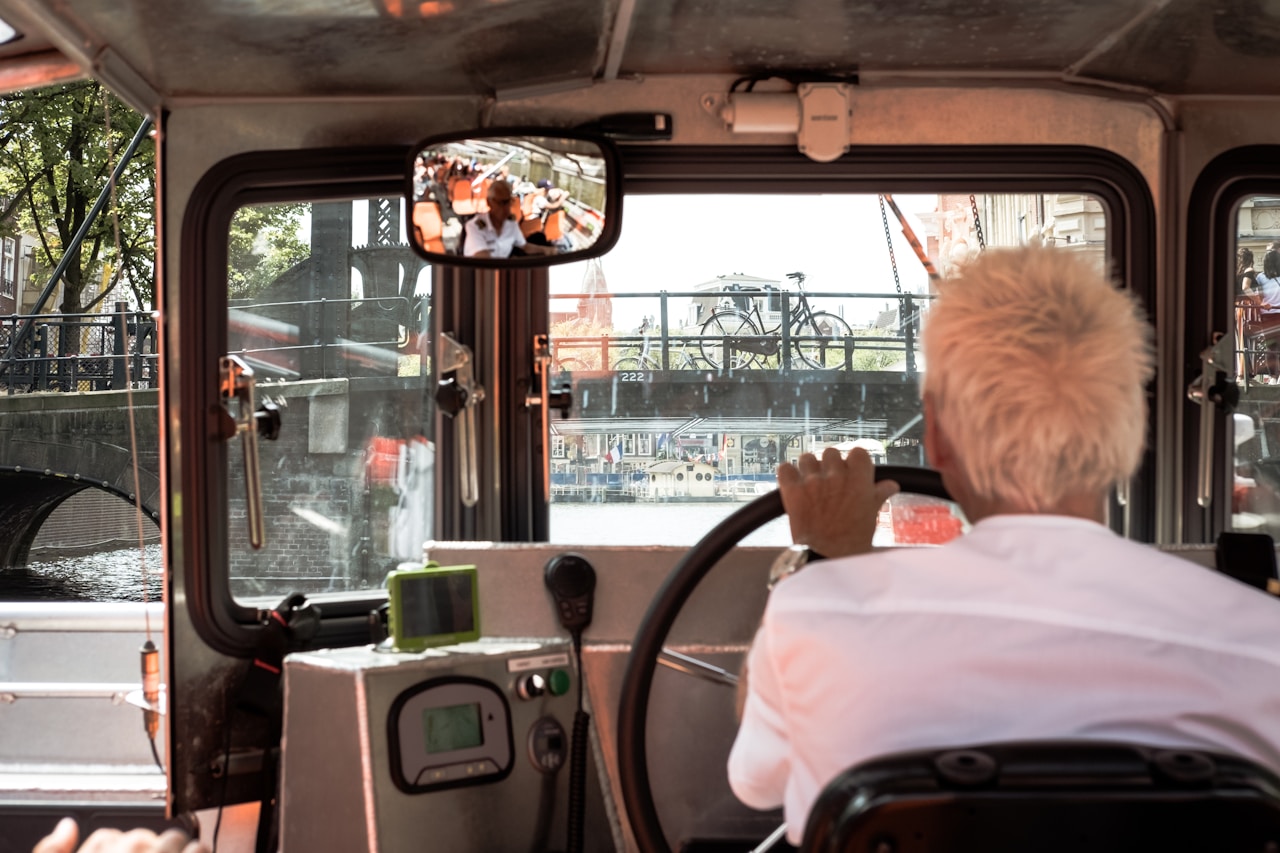
Amsterdam’s extensive transportation network offers visitors multiple options to explore both the historic center and outer districts.
Tourists can seamlessly navigate the city using an integrated system of trams, metros, buses, ferries, and the quintessentially Dutch bicycles.
Understanding the basics of these transit alternatives guarantees travelers can move efficiently between Amsterdam’s iconic canals and lesser-known gems.
To optimize their experience, visitors can use an AI Trip Itinerary Planner to structure sightseeing routes while maintaining safety in this pedestrian and cyclist-friendly metropolis.
An Overview of Amsterdam Transportation Options
Maneuvering the picturesque canals and narrow streets of Amsterdam requires understanding the city’s extensive transportation network.
Amsterdam public transportation offers diverse options, from the efficient tram system crisscrossing the city to buses and metros connecting outer districts.
The all-encompassing public transport Amsterdam system includes water-based transportation via canal boats, while transportation in Amsterdam is supplemented by Amsterdam transit’s renowned bicycle infrastructure.
Navigating the City Center and Outskirts with Ease
The heart of Amsterdam presents unique navigation challenges that differ considerably between the compact center and the sprawling outskirts.
Within central areas, trams provide the backbone of Amsterdam public transport, operating frequently along major thoroughfares.
For reaching outlying neighborhoods, the extensive Amsterdam public transit network combines with Uber in Amsterdam services, offering freedom to explore beyond typical tourist zones without transportation constraints.
Amsterdam Public Transport Explained
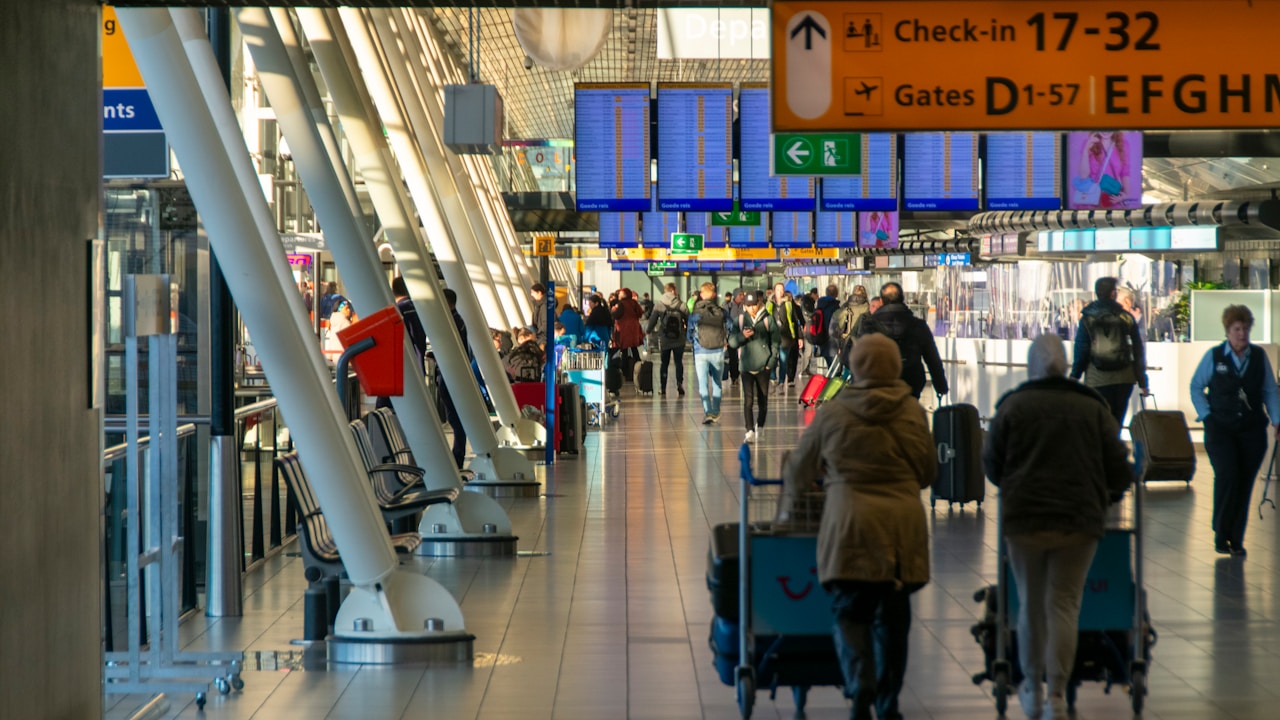
Amsterdam’s extensive public transport system consists of metro, tram, bus, and ferry services, and understanding it is one of the essential things to know before visiting Amsterdam to navigate the city efficiently.
Tickets operate on a zone-based system with various validity periods, from single-hour passes to multi-day cards that offer unlimited travel across all transport modes.
Understanding key zones and transfer points helps travelers efficiently plan journeys while maximizing the value of their transport tickets.
For travelers budgeting their expenses, using a Currency Converter can help calculate transport costs in their home currency for easier financial planning.
Differences Between Metro, Tram, Bus, and Ferry Services
Maneuvering Amsterdam’s public transport system requires understanding the distinct characteristics of its four main services.
The metro offers rapid underground travel, while Amsterdam trams provide convenient above-ground transportation through central areas.
Amsterdam buses reach destinations beyond the subway network.
Ferries cross the IJ River, connecting Amsterdam North with the city center, and are completely free for pedestrians and cyclists.
Key Zones, Tickets, and Validity Periods
Travelers traversing Amsterdam’s public transport network must first understand its zone-based structure and corresponding ticket options.
To better estimate expenses during their stay, visitors can use an AI Trip Cost Estimator to predict transportation costs based on their itinerary and transit pass choices.
The city divides into concentric zones, with tickets valid for specific periods ranging from one hour to seven days.
The Amsterdam travel card offers unlimited rides on tram, metro, bus Amsterdam services, and ferries, making getting around Amsterdam seamless for visitors seeking extensive public transportation in Amsterdam.
Using the Amsterdam Tram Network
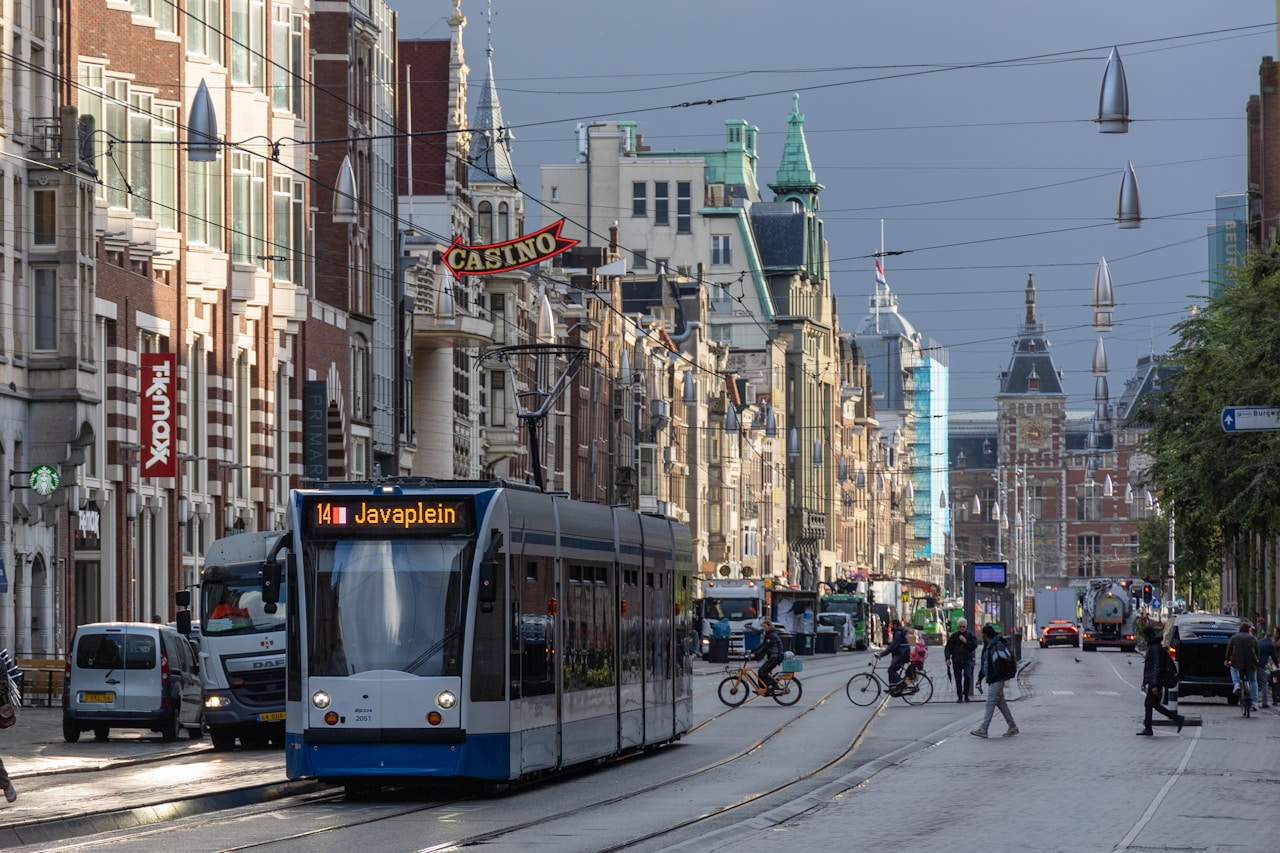
The Amsterdam tram network forms the backbone of the city’s public transportation system, offering extensive coverage across the best neighborhoods in Amsterdam and major tourist destinations.
Trams provide an ideal balance between the speed of metros and the accessibility of buses, with large windows that allow visitors to sightseeing while in transit.
When compared to other transport options, trams offer more frequent service than buses and better surface-level views than the underground metro lines.
Amsterdam Tram: What Visitors Should Know
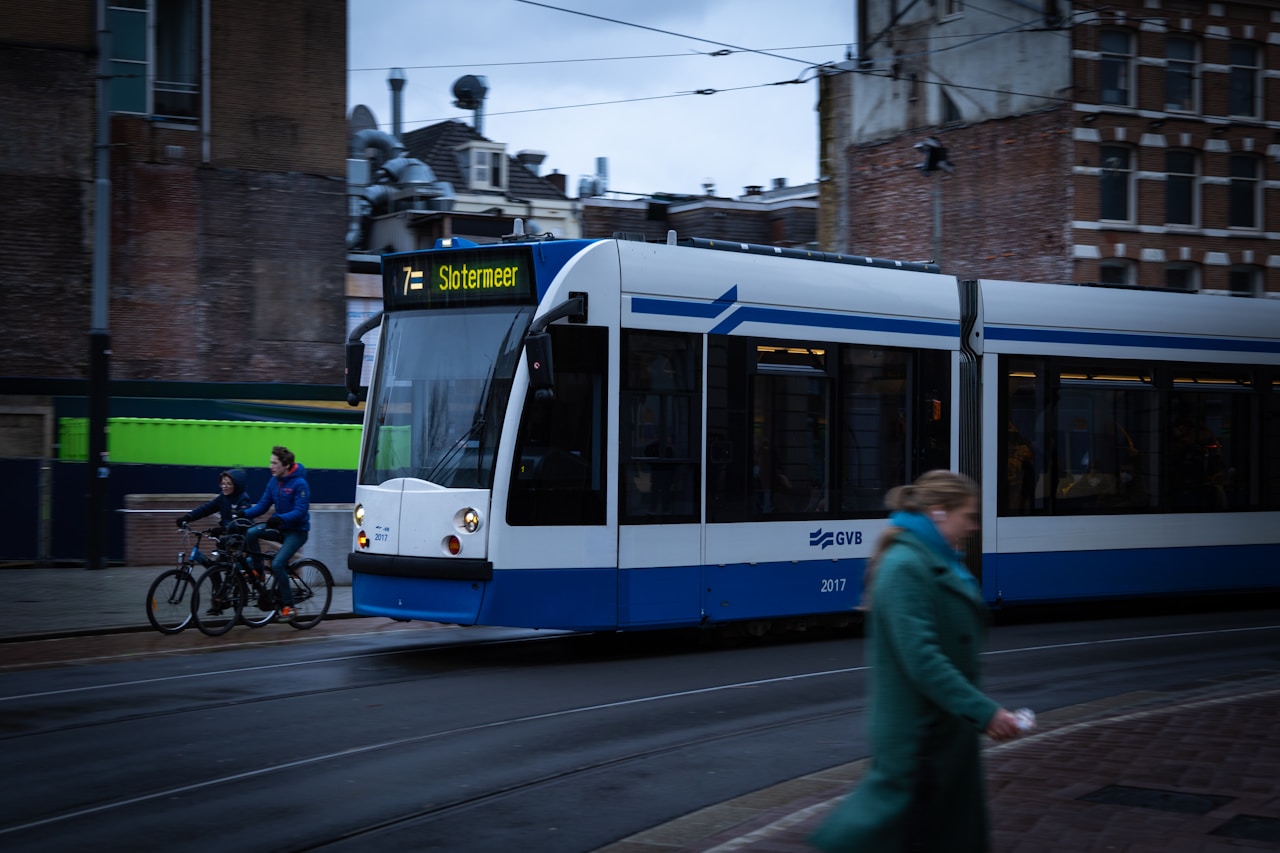
Amsterdam’s extensive tram network connects all major neighborhoods with routes running from early morning until midnight, with night buses replacing service during late hours.
Visitors can purchase tickets directly from tram drivers, at GVB ticket offices, or from automated machines at major stops, with options ranging from hourly passes to multi-day travel cards.
The most convenient option for tourists is often the Amsterdam Travel Ticket or the I amsterdam City Card, both of which include unlimited tram travel along with other transportation benefits.
Tram Routes and Schedules Throughout the City
Maneuvering Amsterdam’s extensive tram network offers visitors a convenient and efficient way to explore the city, with 15 different tram lines crisscrossing through central districts and extending to outer neighborhoods.
Trams run frequently from 6:00 AM until midnight, connecting amsterdam local hotspots and best places to visit in amsterdam.
While Uber in amsterdam exists, trams provide better access to places to visit near amsterdam.
Ticket Options and Where to Buy Them
Maneuvering ticket options for Amsterdam’s tram network requires understanding the various passes available to travelers seeking convenient transport around the city.
Visitors can purchase single-hour tickets (€3.20) or opt for multi-day passes ranging from 24 hours (€8.50) to 168 hours (€39).
Tickets are available from GVB ticket machines, service points, and the official GVB app, allowing immediate boarding upon activation.
Amsterdam Trams vs. Other Public Transport

Amsterdam’s tram network often proves more advantageous than metros or buses when tourists wish to enjoy scenic city views while traveling between central attractions.
Trams offer superior accessibility for visitors with mobility concerns, featuring low-floor entrances at most stops throughout the historic center and easy access to the best things to do in Amsterdam.
While buses cover broader areas and metros provide faster connections to outlying districts, trams strike the ideal balance of convenience and experience for travelers exploring Amsterdam’s UNESCO-listed canal ring and adjacent neighborhoods.
When to Choose the Tram Over the Metro or Bus
Why choose a tram when Amsterdam offers multiple public transportation options?
Trams are ideal for shorter distances through central areas, providing above-ground views while avoiding traffic congestion.
Unlike metro lines, trams access more historic districts and canal-side attractions.
Choose trams when sightseeing is part of your journey, when maneuvering through narrow streets, or when seeking more frequent stops than buses offer.
Accessibility and Convenience for Travelers
How easily can travelers with diverse needs navigate Amsterdam’s iconic tram network? Remarkably well, as the system prioritizes accessibility with low-floor trams offering step-free boarding at most stops.
Clearly marked priority seating, wheelchair spaces, and audio-visual announcements accommodate mobility-impaired, elderly, and visually or hearing-impaired visitors.
The network’s ubiquitous presence makes it convenient for exploring central Amsterdam without lengthy walks.
Amsterdam Metro, Buses, and Ferries

Amsterdam’s transportation system extends beyond trams to include a modern metro network, convenient buses, and essential ferry services.
The metro provides rapid connections to outlying districts, while buses offer flexibility for reaching areas not covered by rail options.
Free ferries operate across the IJ River, connecting Central Station to Amsterdam Noord and serving as both a practical transport solution and a unique way to experience the city’s waterways.
Getting Around Amsterdam Using the Metro
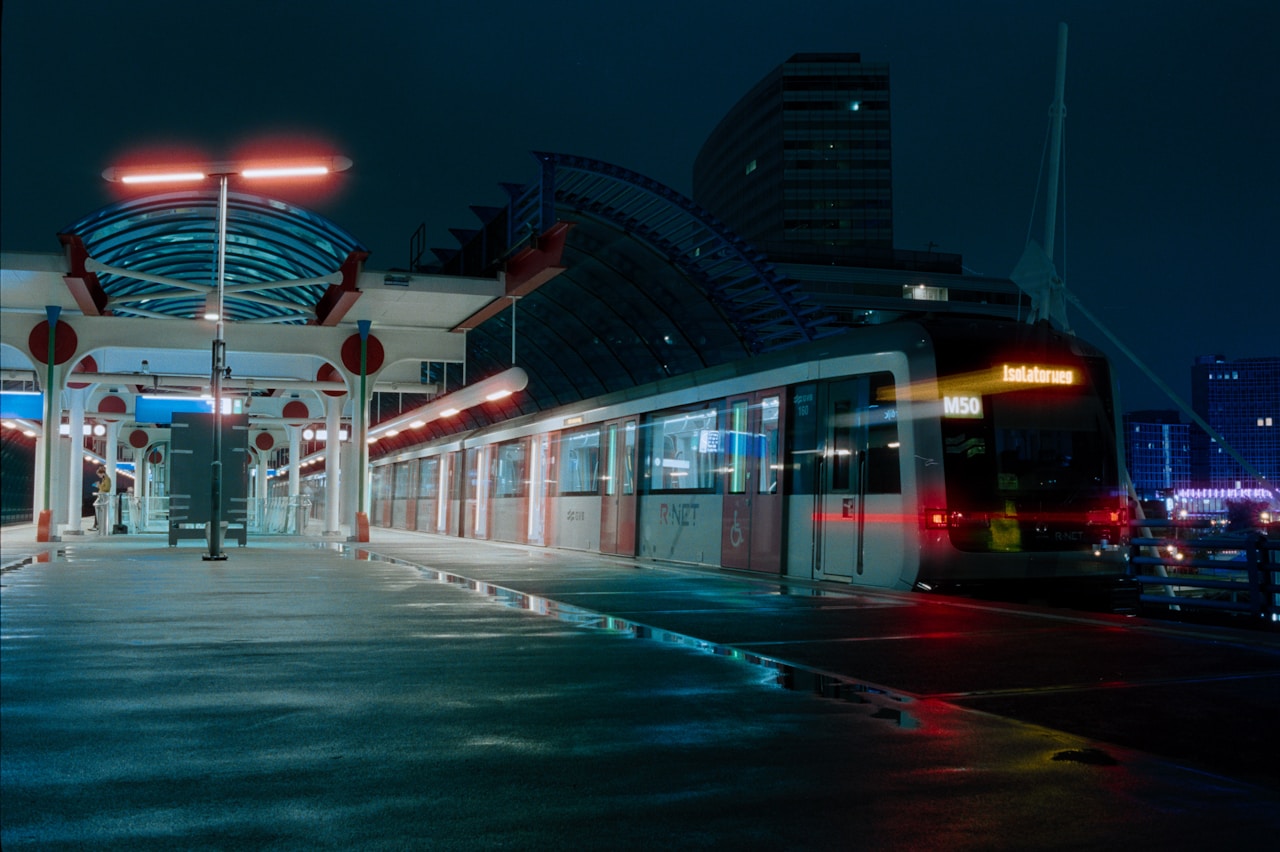
Amsterdam’s extensive metro system efficiently connects suburban districts to the city center while serving major transportation hubs like Centraal Station and Zuid.
Travelers can choose from various pass options including single-ride tickets, the multi-day Amsterdam Travel Ticket, or the popular GVB day passes that offer unlimited access to metro, bus, and ferry services.
These metro passes prove most economical for visitors planning to explore beyond the canal belt, especially those staying in outlying accommodations or wishing to visit attractions in Amsterdam Noord via the free ferry connections.
How the Metro Serves Suburban Areas and Major Hubs
While central Amsterdam boasts an extensive tram and bus network, the metro system serves as the crucial artery connecting the city’s outlying neighborhoods and suburbs to the urban center.
- Metro lines 50, 51, 52, and 54 create crucial links between Amsterdam Central Station and key areas like Amsterdam Zuid, Amsterdam Arena, and Amstelveen.
- The North-South Line (52) tunnels beneath the IJ river, connecting northern districts directly to the city center.
- Transfer stations like Amsterdam Amstel enable seamless connections to national rail services.
Amsterdam Metro Pass Options and Best Uses
Numerous transportation pass options await visitors to Amsterdam’s metro system, each designed to accommodate different travel needs and durations of stay.
The GVB day passes (24-72 hours) offer unlimited access to all public transport modes, while the Amsterdam Travel Ticket includes airport transfers.
For longer stays, the anonymous OV-chipkaart provides pay-as-you-go flexibility with significant savings over single-use tickets.
Amsterdam Bus: When It’s the Best Choice
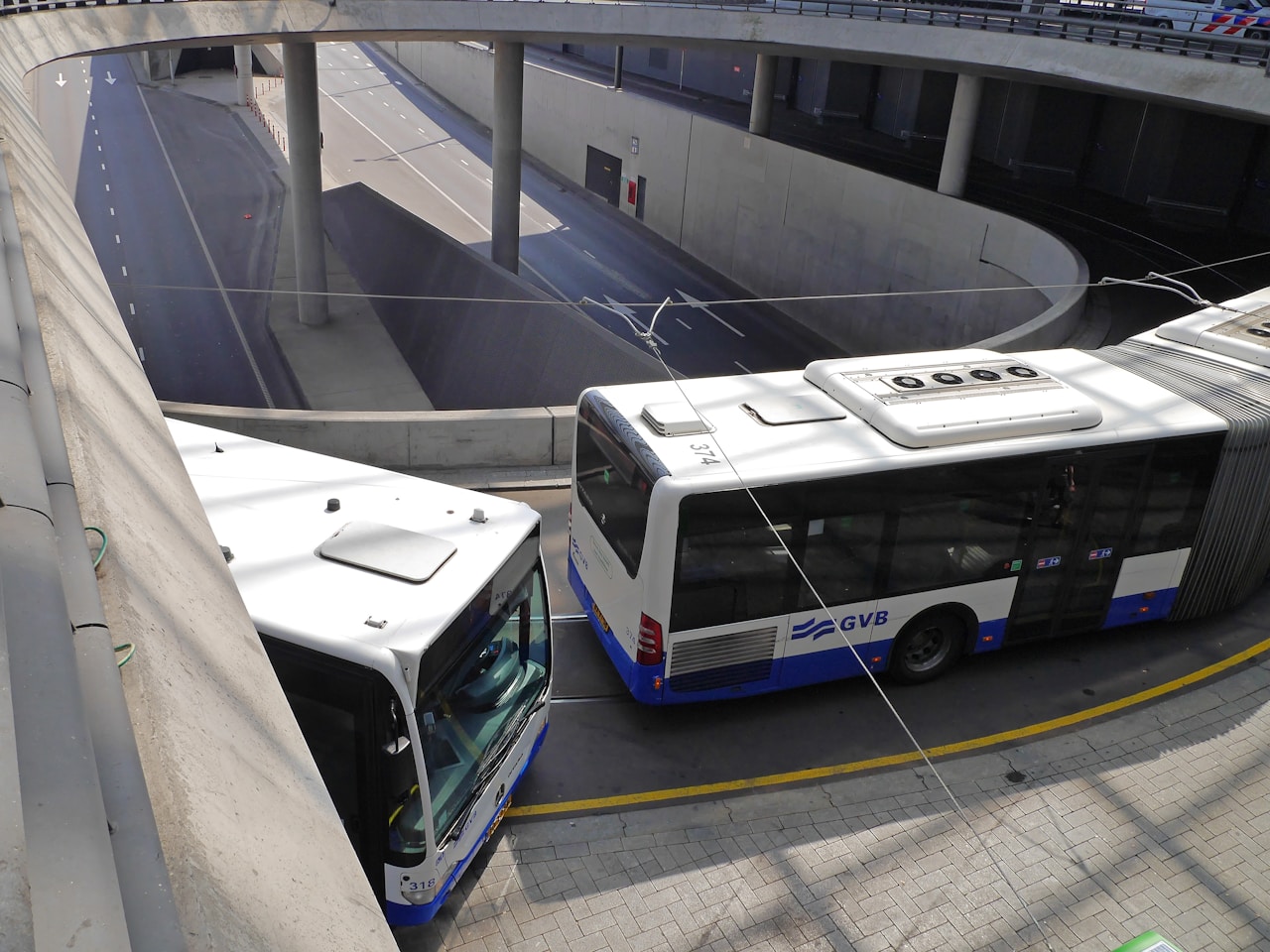
While Amsterdam’s tram and metro systems efficiently serve the central areas, buses provide vital connections to residential neighborhoods and outer districts that other public transport doesn’t reach.
The night bus network operates after regular service hours end, offering essential transportation for late-night travelers with routes that cover most of the city until the early morning.
Regional buses extend beyond the city limits, connecting Amsterdam to surrounding towns and attractions, making them invaluable for day trips and exploring the broader metropolitan area.
Coverage in Residential and Less Central Areas
For travelers venturing beyond Amsterdam’s picturesque canals and tourist hotspots, buses serve as the backbone of public transportation in residential and peripheral districts.
- Buses reach Noord neighborhoods where trams don’t operate.
- Routes 21, 37, and 41 connect eastern residential areas to metro stations.
- Night buses (N-prefix) maintain service when other transit options cease operating.
Late-Night Bus Options and Regional Routes
When the city’s trams and metros wind down their services around midnight, Amsterdam’s extensive night bus network springs to life, providing essential transportation for late-night revelers, shift workers, and travelers with early morning flights.
These night routes, marked with “N” prefixes, connect central Amsterdam to outlying neighborhoods and nearby towns like Amstelveen, while regional buses extend to destinations throughout North Holland province.
Crossing the Water: Free Ferries in Amsterdam
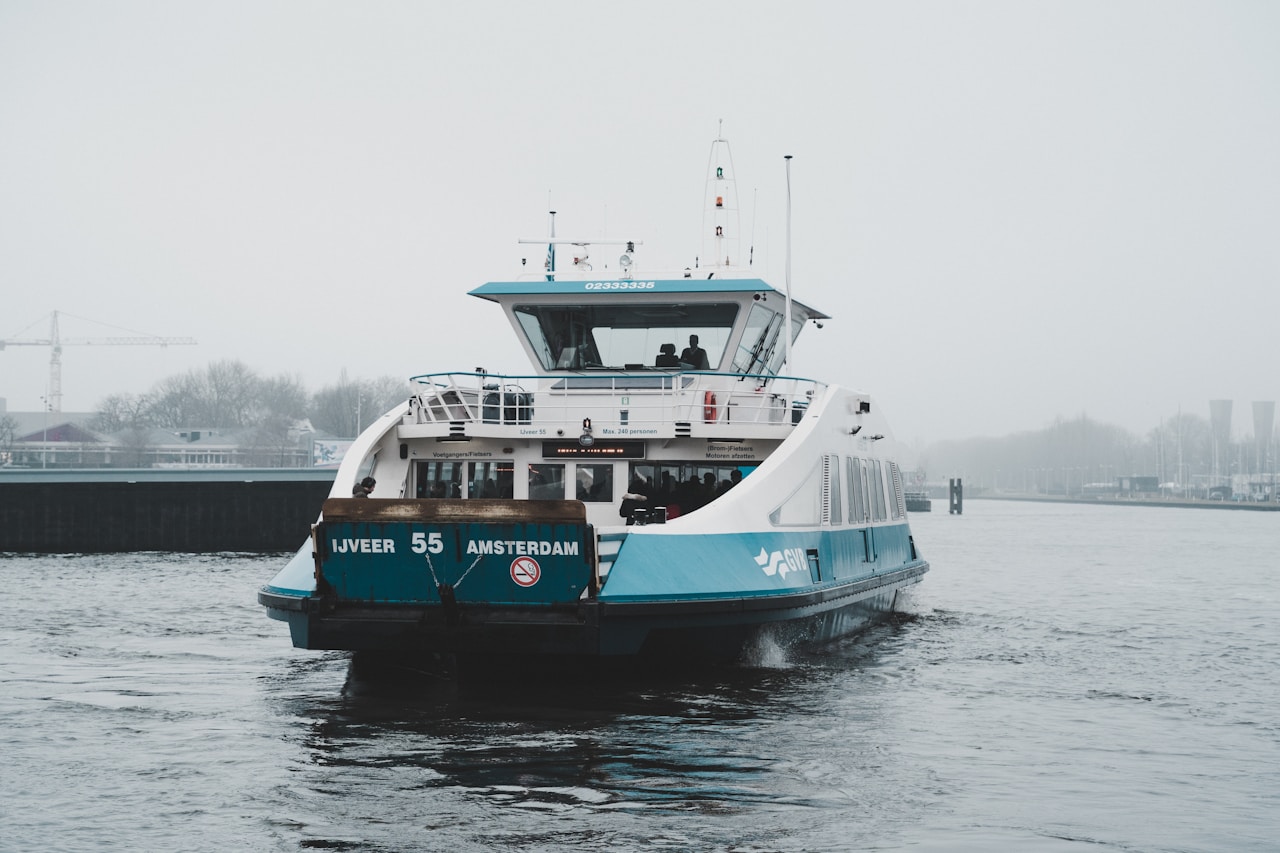
Amsterdam’s free ferry service provides essential connections between the city center and Amsterdam Noord, operating from several piers including the main terminal behind Central Station.
These water crossings run on regular timetables with frequent departures, typically every 5-10 minutes during daytime hours and less frequently at night.
Passengers can simply walk or cycle aboard without tickets, making the ferries a convenient and scenic transportation option for locals and tourists alike.
Taking the Ferry to Amsterdam Noord
Crossing the IJ waterway to Amsterdam Noord is surprisingly simple thanks to the city’s free ferry services.
The primary terminal behind Central Station offers several routes to Noord’s lively neighborhoods.
- The IJplein ferry connects to trendy NDSM Wharf with its cultural hotspots.
- Buiksloterweg ferry runs every 5-6 minutes for quick access.
- Evening services continue until midnight, with night ferries available thereafter.
Timetables and Access Points
While planning a journey across Amsterdam’s IJ waterway, travelers should familiarize themselves with the extensive timetable system that governs the city’s ferry services.
Ferries operate from multiple points along the waterfront, with the main terminal behind Amsterdam Centraal Station. Most routes run 24/7, with increased frequency during peak hours.
Service information is displayed at each dock and available through the GVB website.
Bike Culture and Pedestrian Movement
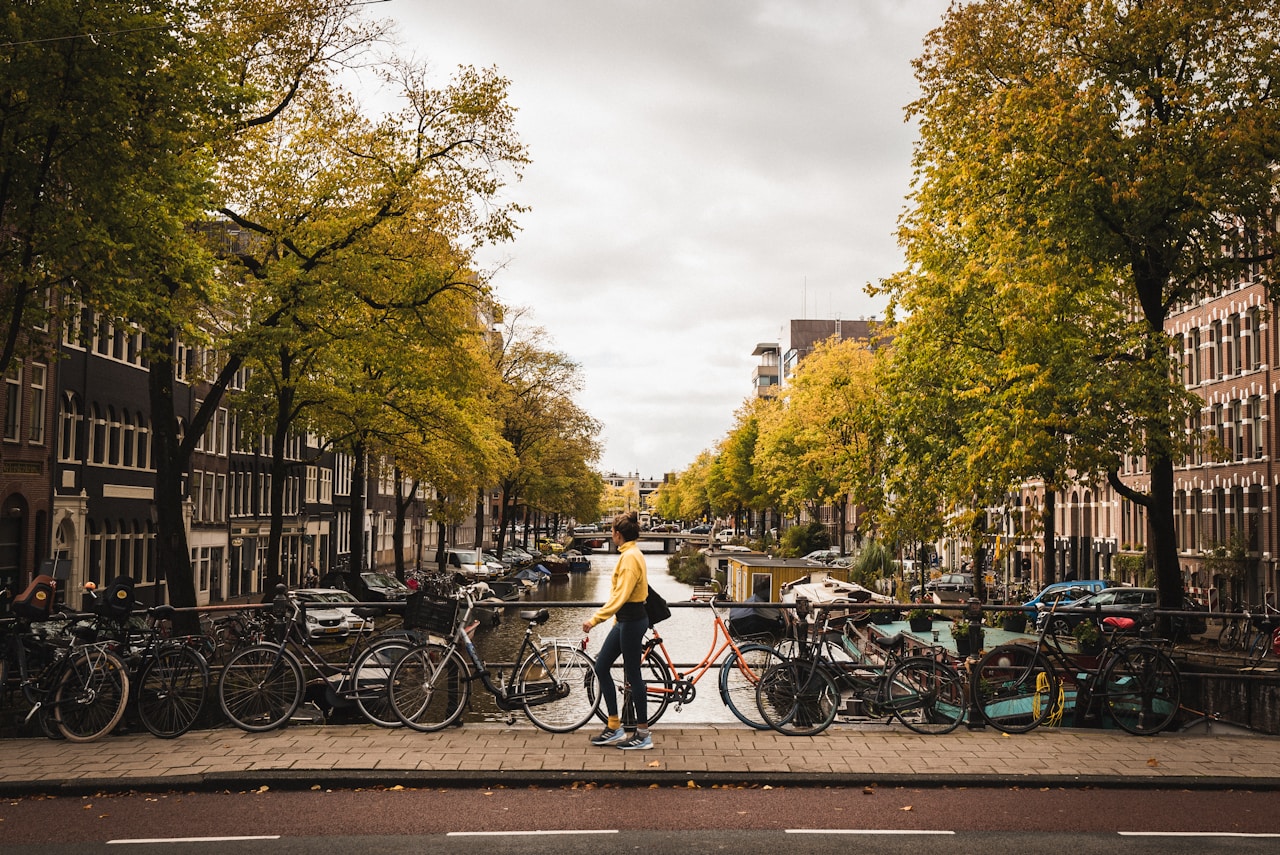
Amsterdam’s bike culture offers visitors the authentic local experience, with an extensive network of cycling paths connecting all corners of the city.
Pedestrians benefit from compact, walkable neighborhoods where historic canals and architectural treasures reveal themselves around every corner.
Both cycling and walking provide intimate perspectives of Amsterdam that motorized transportation cannot match, allowing travelers to discover hidden courtyards, specialty shops, and neighborhood cafés at their own pace.
Exploring Amsterdam Like a Local: On Two Wheels
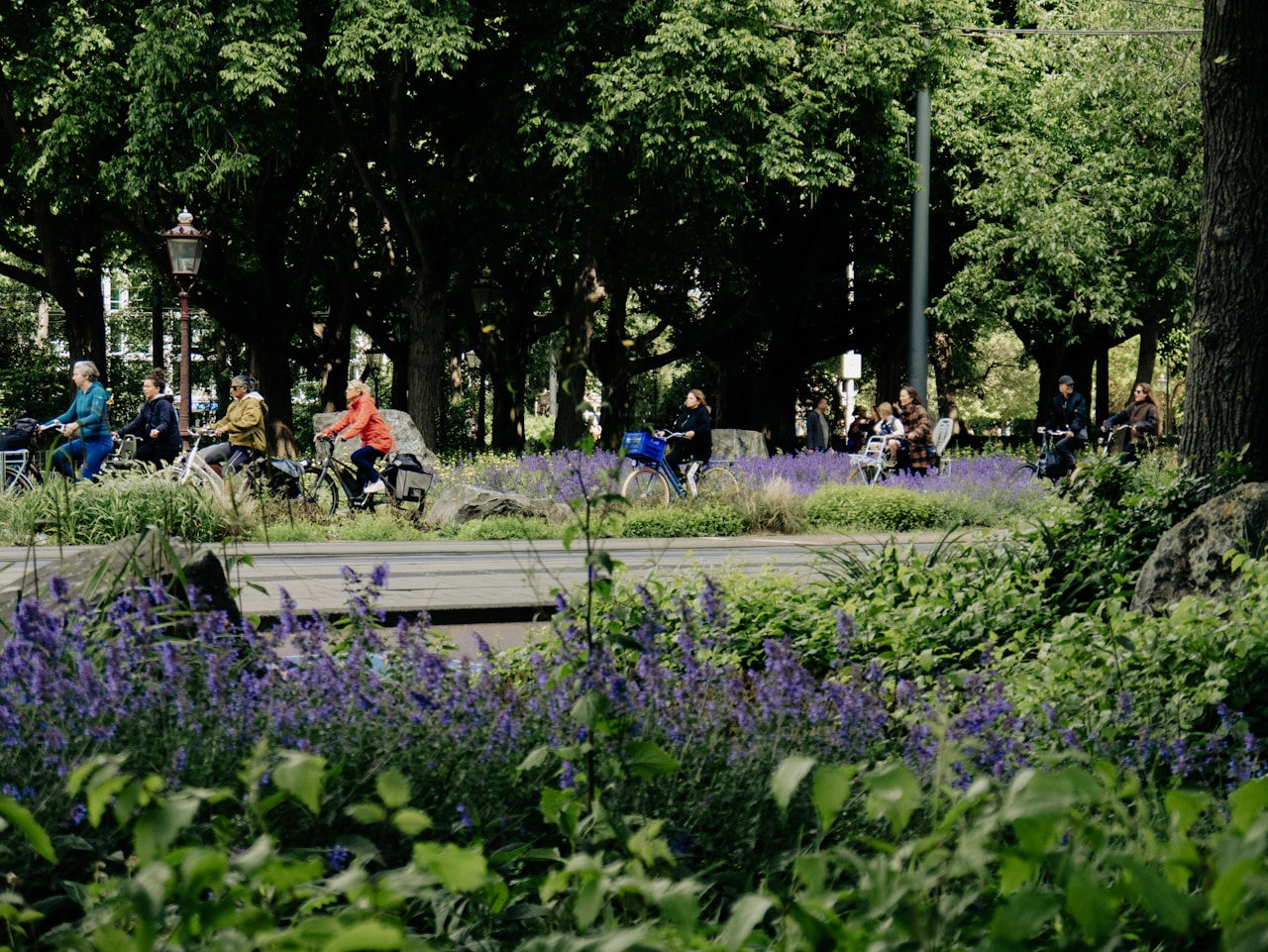
Visitors to Amsterdam can join locals in the city’s lively cycling culture by renting a bike from numerous rental shops, especially during the best time to visit Amsterdam when the weather is perfect for cycling.
When cycling through Amsterdam’s busy streets, riders should follow basic safety protocols: stay in designated bike lanes, signal turns clearly, and always lock the bike securely when parking.
Mastering these fundamentals allows tourists to experience the city as Amsterdammers do, traversing the intricate canal network and bustling neighborhoods with the freedom and efficiency that only cycling provides.
Before setting out, using a Travel Packing List ensures travelers bring essential gear for biking and walking adventures.
Renting a Bike: What to Expect and Costs Involved
Renting a bicycle in Amsterdam represents not just a practical transportation choice, but an authentic cultural experience.
Most rental shops offer well-maintained city bikes at competitive rates, typically ranging from €10-15 per day with discounts for longer periods.
- Basic city bikes cost €10-15 daily
- ID and €50-100 deposit required at most locations
- Insurance options available for €3-5 extra daily
Safety Tips for Biking in a Busy City
Traversing Amsterdam’s bustling streets on two wheels requires a blend of confidence and caution, particularly for those unaccustomed to the city’s unique cycling infrastructure.
Always signal turns with extended hands, maintain a steady pace, and follow traffic signals. Yield to trams, which have absolute right-of-way.
Lock your bike properly with two locks, one through the frame and another securing the wheel to a fixed object.
Getting Around Amsterdam on Foot
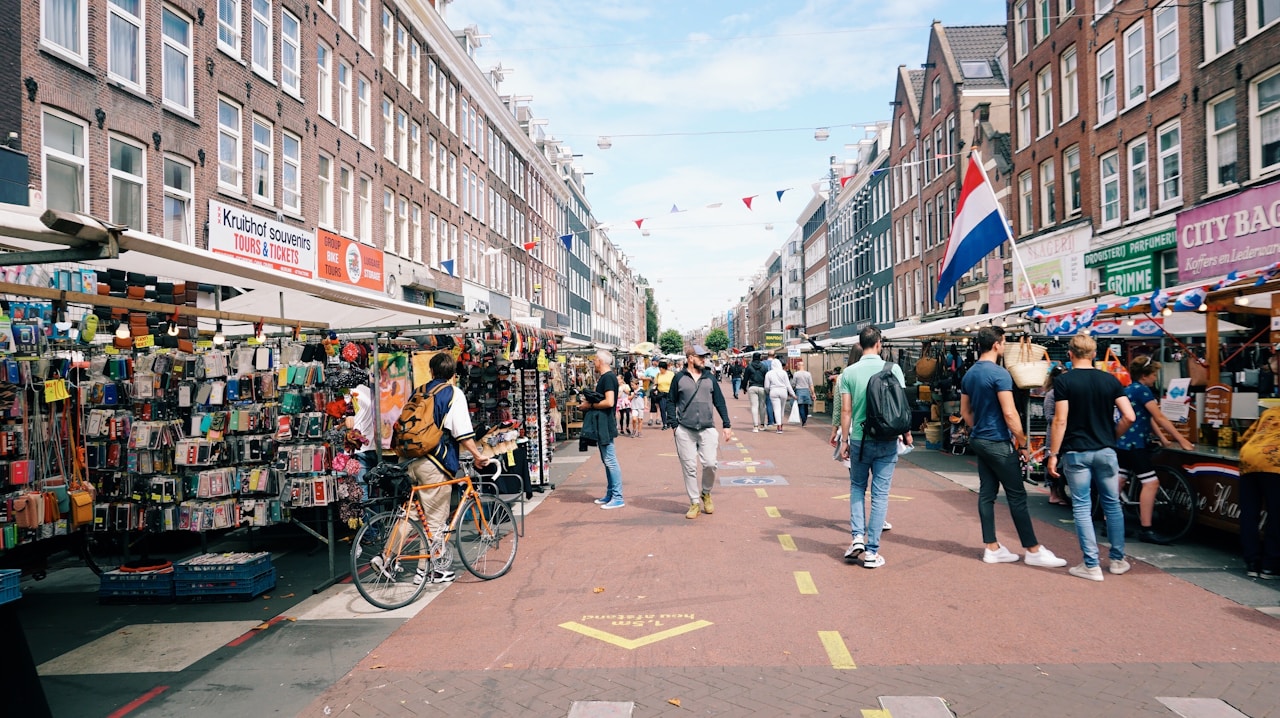
Amsterdam’s compact Central Canal Belt offers exceptional pedestrian-friendly zones, with narrow bridges and historic streets ideally explored on foot despite the city’s famous bike culture.
The Museum Quarter connects major attractions through scenic paths, allowing visitors to traverse between the Rijksmuseum, Van Gogh Museum, and Vondelpark without public transportation.
Wandering along the Prinsengracht or Herengracht canals provides travelers with quintessential Amsterdam views while maneuvering through the city’s UNESCO-protected canal ring network.
Walkability of the Central Canal Belt and Museums
Almost every corner of Amsterdam’s central Canal Belt beckons the pedestrian with its picture-perfect views and intimate scale.
The city’s museum district complements this walkable charm, offering cultural treasures within comfortable strolling distance of each other.
- Most major museums cluster within the Museum Quarter, requiring just 15-20 minutes to walk between them.
- Canal pathways feature numerous benches for impromptu rests.
- Nearly all streets have well-maintained sidewalks with accessibility ramps.
Best Pedestrian Routes and Scenic Paths
While cyclists command much of Amsterdam’s transportation spotlight, the city offers an equally impressive network of pedestrian-friendly routes that showcase its historic charm. The Jordaan district features intimate alleyways adorned with cafés and boutiques.
For waterfront views, stroll the Amstel River path or explore Brouwersgracht, often cited as Amsterdam’s most picturesque canal. Vondelpark’s leafy pathways provide respite from urban exploration.
Using Taxis, Ride Shares, and Cars
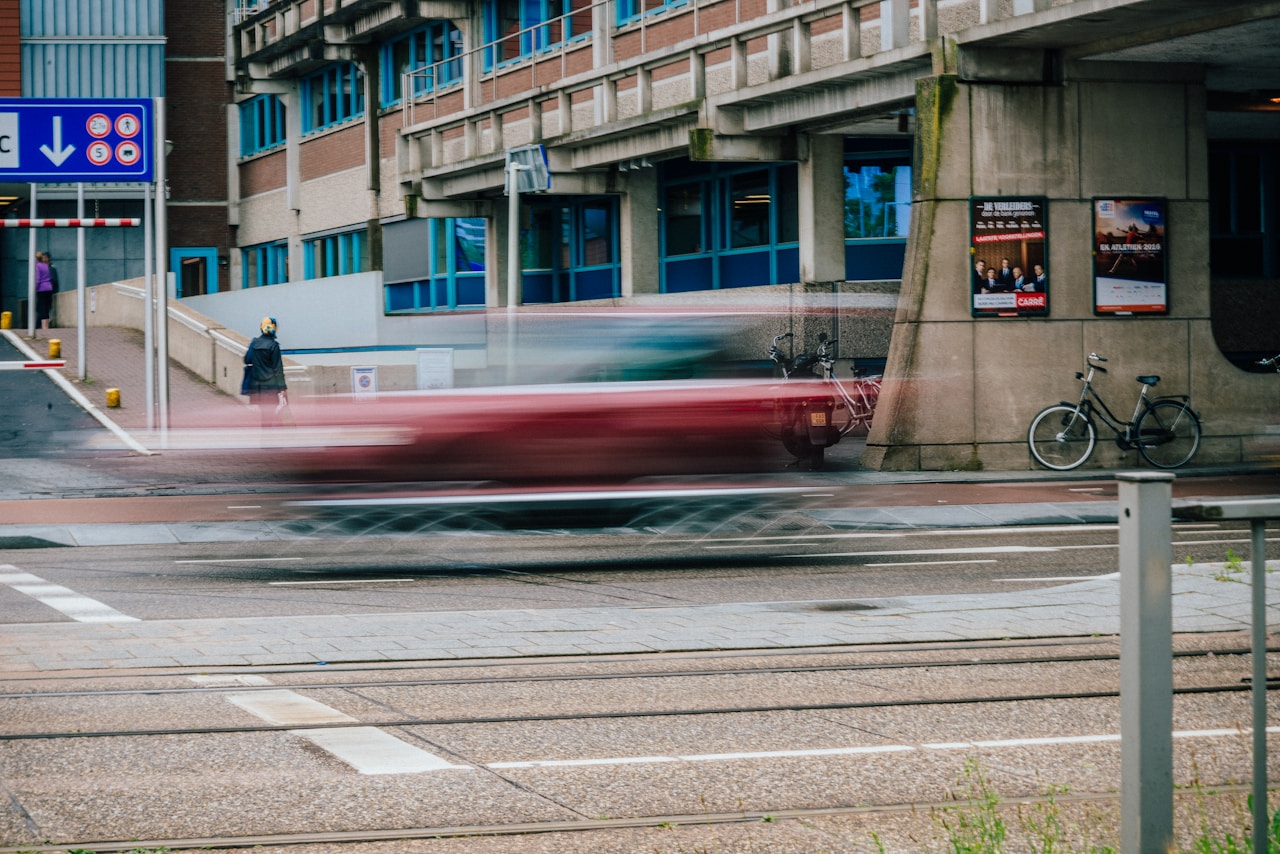
While taxis and ride-sharing services like Uber operate throughout Amsterdam, they represent a more expensive transportation option compared to public transit or cycling.
Visitors should know that Uber functions seamlessly in the city, alongside traditional taxi services that can be hailed on the street or at designated taxi stands.
Driving a personal vehicle in Amsterdam presents considerable challenges, including limited parking availability, expensive hourly rates, and a street network designed to prioritize cyclists and pedestrians rather than cars.
Is Uber in Amsterdam? Ride-Share Options for Visitors
Uber operates in Amsterdam alongside traditional taxi services, offering visitors a familiar ride-sharing option with generally lower prices but potentially longer wait times during peak hours.
Amsterdam’s official taxis maintain a reputation for reliability and local knowledge, though they typically charge higher rates than their Uber counterparts.
Environmentally-conscious travelers will appreciate that both Uber Green and the city’s taxi fleet increasingly feature electric vehicles, supporting Amsterdam’s sustainability goals.
Comparing Uber with Amsterdam Taxi Services
Many travelers wonder if Uber operates in Amsterdam and how it compares to traditional taxi services.
Both options provide reliable transportation around the city, but they differ in several key aspects:
- Pricing: Uber typically offers more competitive rates than traditional taxis, especially during non-peak hours.
- Availability: Taxis are more abundant at stands and can be hailed on streets, while Uber requires app booking.
- Payment: Uber processes payment automatically through the app, whereas taxis accept cash and cards.
Does Amsterdam Have Uber Green or Electric Options?
Environmental consciousness permeates Amsterdam’s transportation landscape, extending to ride-sharing services like Uber.
Amsterdam offers Uber Green, allowing travelers to request electric vehicles for eco-friendly journeys. This option reflects the city’s commitment to sustainability while providing visitors the same convenience of standard Uber services.
Electric taxis are increasingly common throughout Amsterdam’s streets, furthering the city’s green transportation goals.
Driving in Amsterdam: What You Should Know
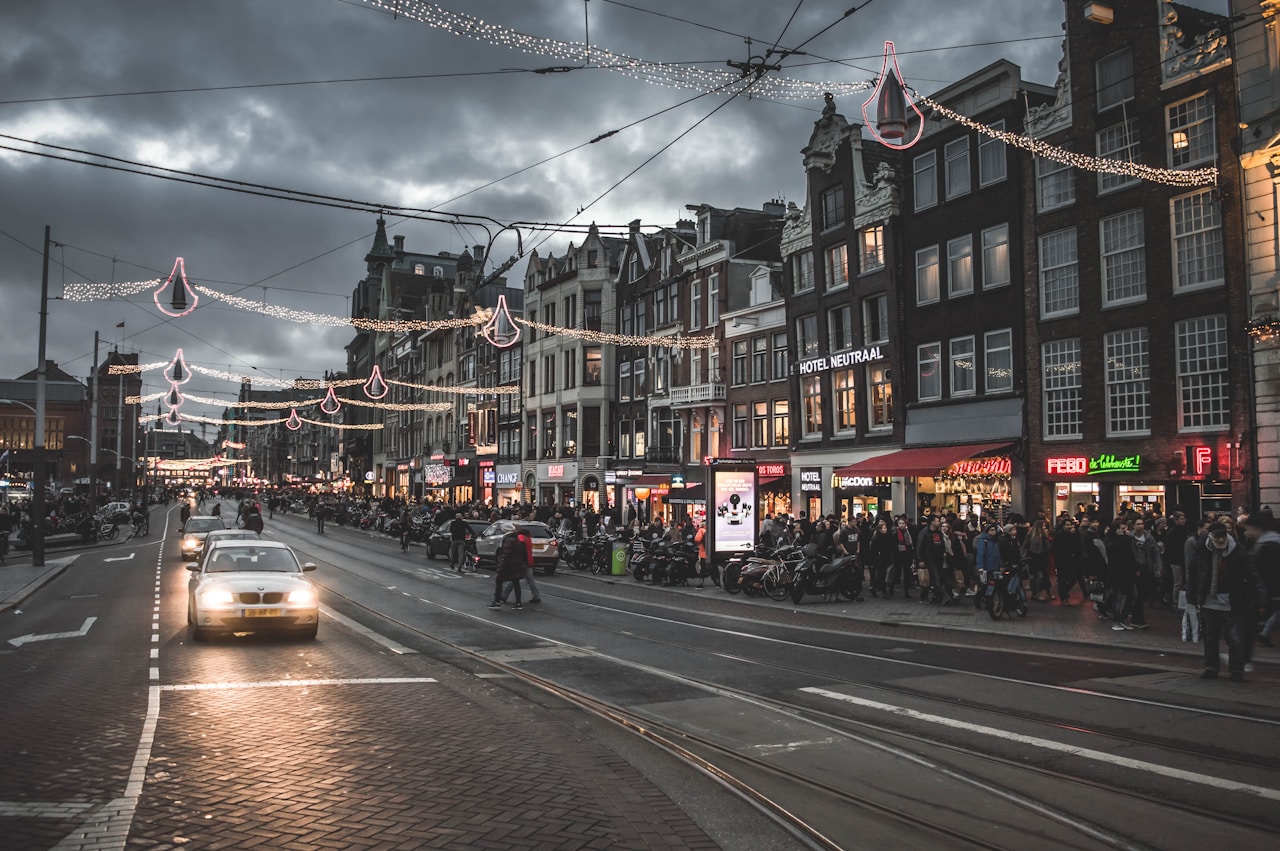
Amsterdam’s complex traffic zones and extensive parking limitations pose significant challenges for visitors considering driving in the city center.
Car rentals typically make sense only for travelers planning excursions to rural areas outside Amsterdam or nearby cities that are less accessible by public transport.
Understanding the Environmental Zones, parking permit requirements, and steep hourly parking rates (often exceeding €7.50) is essential before deciding to drive within city limits.
Traffic Zones and Parking Limitations
Maneuvering through Amsterdam’s traffic zones requires understanding the city’s complex system of restrictions and parking regulations.
The city implements various measures to reduce congestion and promote sustainable transportation.
- Environmental zones prohibit older, high-emission vehicles from entering central areas.
- Parking costs average €7.50/hour in central districts, with decreasing rates in outer zones.
- P+R facilities offer economical parking options at city peripheries, connected to public transit.
When a Car Rental Makes Sense
While the compact nature of Amsterdam’s center and its excellent public transportation network make cars unnecessary for most visitors, certain situations warrant considering a rental vehicle.
Car rentals prove valuable for day trips to coastal towns like Zandvoort, exploring the tulip fields of Keukenhof in spring, or visiting rural areas where public transit is limited.
Families with small children might also appreciate the convenience and flexibility a rental provides.
Saving with Amsterdam Travel Cards and Tickets

Travelers to Amsterdam can considerably cut transportation costs by selecting the appropriate travel card from options like the I Amsterdam City Card, GVB day tickets, or the OV-chipkaart.
These passes can be purchased at GVB service points, ticket machines at major stations, tourist information offices, or online prior to arrival.
Proper usage requires checking in and out with each journey by holding the card against the readers on trams, buses, or at station gates, which helps visitors maximize savings while exploring the city’s extensive transit network.
Choosing the Right Amsterdam Travel Card
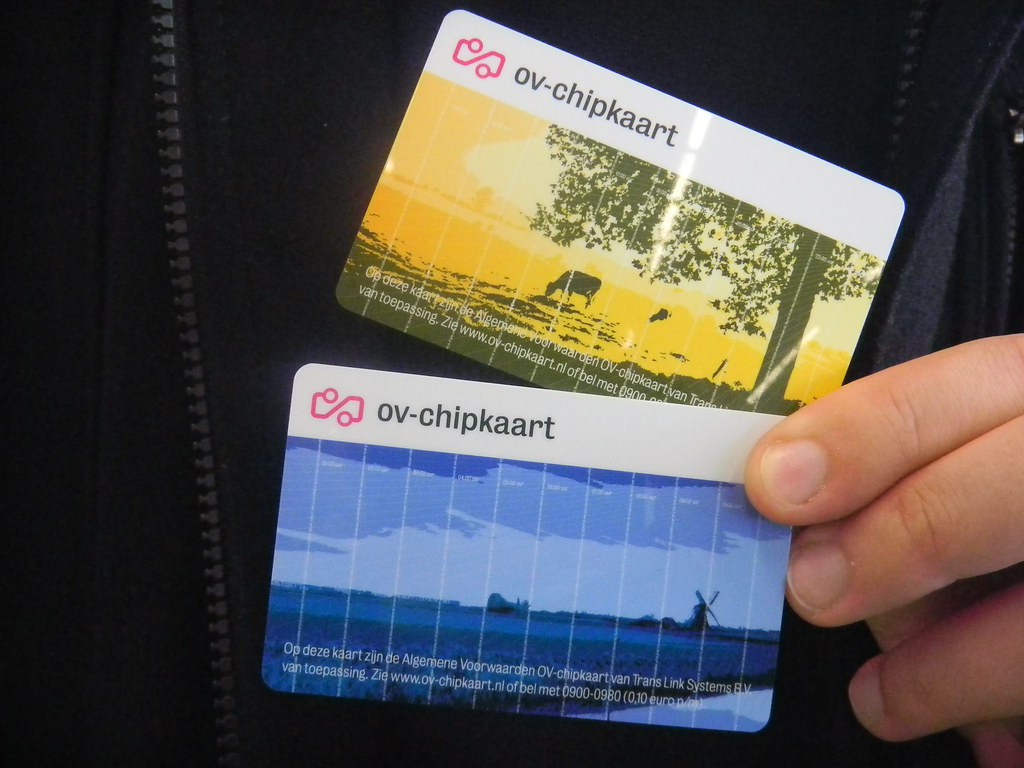
Amsterdam’s public transportation system offers various travel card options to suit different visitor needs, including the GVB pass for city-wide transit and the all-encompassing I Amsterdam Card that combines transport with museum access.
Travelers seeking the best budget-friendly options can consult an AI Cheap Travel Advisor to find the most cost-effective transit solutions.
Travelers staying for just a day or two might benefit most from the 24-hour or 48-hour GVB pass, while those planning longer stays should consider the multi-day I Amsterdam Card or weekly GVB options.
Understanding the coverage areas and included benefits of each card type can lead to significant savings and convenience when maneuvering through the city’s extensive transportation network.
Amsterdam Public Transport Options: GVB, I Amsterdam Card, and More
Maneuvering the compact yet intricate web of Amsterdam’s public transport system requires understanding the various travel cards and tickets designed to simplify your journey while saving money.
- The GVB card offers unlimited travel on trams, buses, and metros for periods ranging from 1-7 days.
- I Amsterdam Card combines transport with free museum entry and canal cruises.
- OV-chipkaart functions as a reloadable payment system for all Dutch public transport.
Which Card Is Best for Short or Long Stays
Selecting the ideal Amsterdam travel card can considerably impact both your budget and convenience, particularly when the right choice varies dramatically based on your stay duration.
Travelers unsure of how long to stay can consult an AI Trip Length Guide to better plan their time in Amsterdam.
For stays under 3 days, the I Amsterdam Card offers excellent value with included attractions.
Longer visitors should consider multi-day GVB passes or the Amsterdam Travel Ticket, which covers airport transfers and city-wide transport.
Where to Buy and How to Use Transit Passes
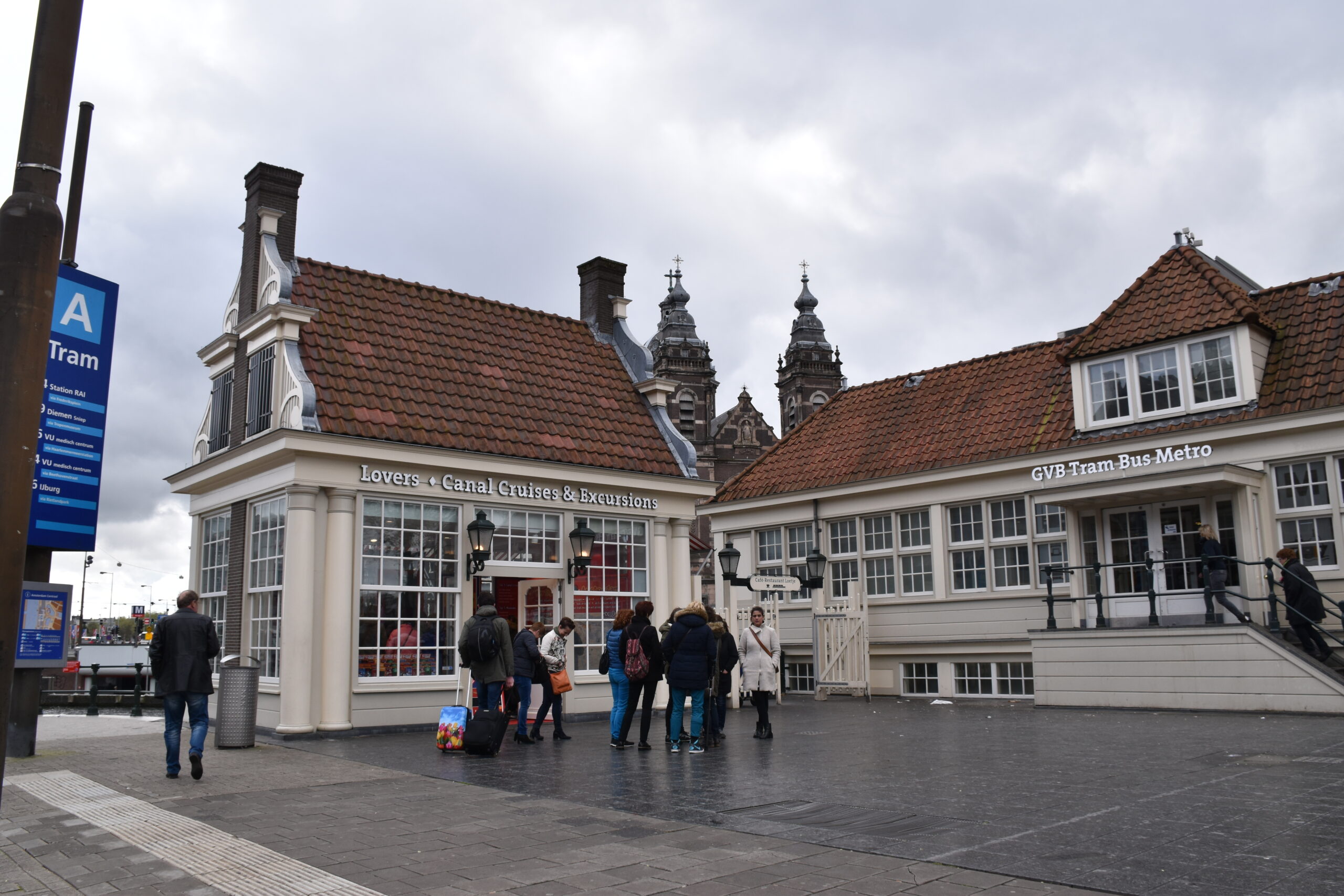
Travel passes in Amsterdam can be purchased at GVB service points in major stations, from automated ticket machines throughout the city, or through official transportation apps like GVB and NS, often recommended in any comprehensive Amsterdam travel guide.
When using physical cards, passengers must remember to check in and out by holding their card against the circular readers at the beginning and end of each journey.
Travelers can verify their card balance at ticket machines, through mobile apps, or at service counters, ensuring they have sufficient funds before starting on their next Amsterdam adventure.
Stations, Ticket Machines, and Digital Apps
Maneuvering Amsterdam’s public transportation system becomes considerably easier when travelers understand where and how to purchase tickets.
- Major transit hubs like Amsterdam Centraal Station offer full-service ticket counters with English-speaking staff.
- GVB ticket machines accept credit cards and provide instructions in multiple languages.
- The official GVB app enables mobile ticket purchases and real-time journey planning without waiting in lines.
Validating and Checking Balance on Cards
Amsterdam travelers must properly validate their transit cards and regularly check remaining balances to avoid fines and service disruptions during their visit. All travelers must tap in and out when using public transportation.
OV-chipkaart balances can be checked at ticket machines, service counters, or via the NS app, which displays remaining credit and travel history.
Extra Tips for Public Transit and Nearby Excursions
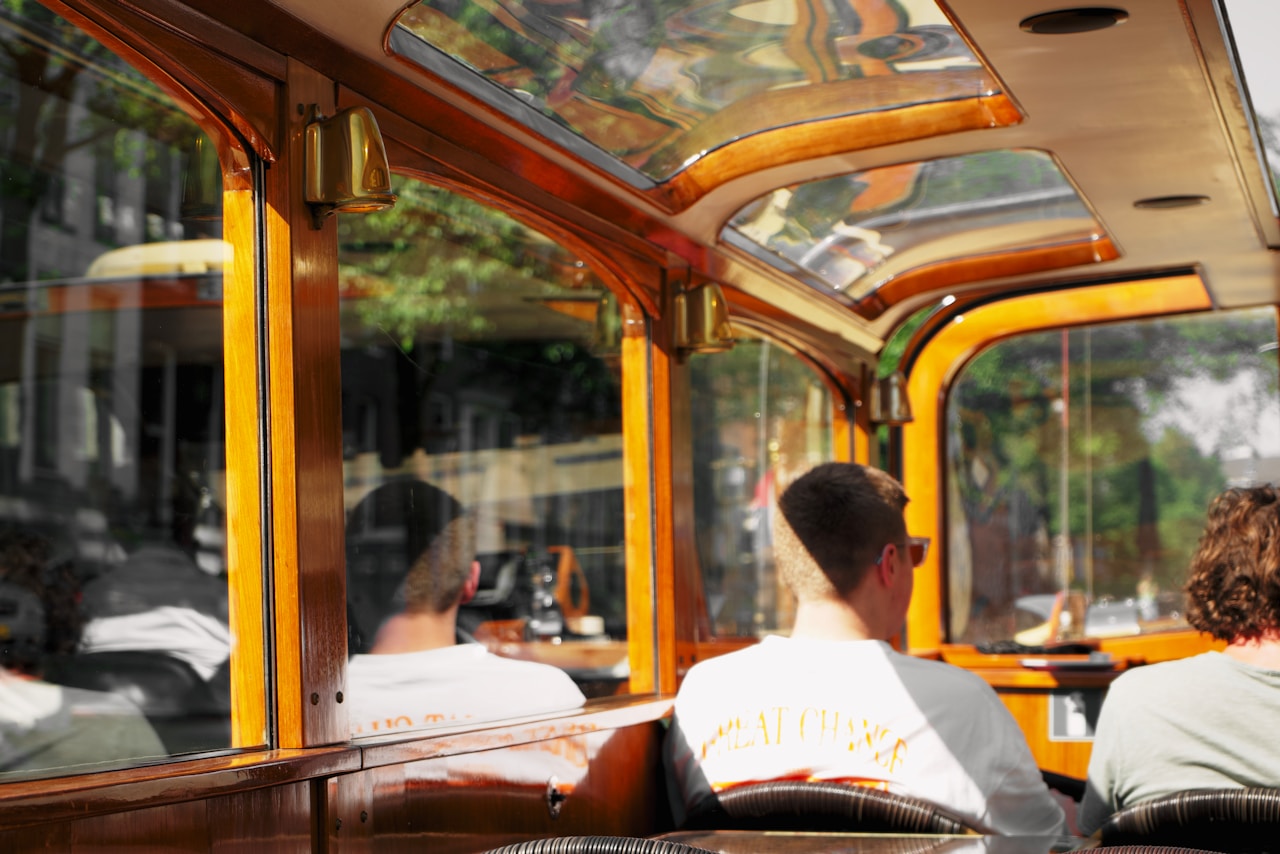
Visitors should stand on the right side of escalators and refrain from eating on public transportation to adhere to Amsterdam’s transit etiquette.
The OV-chipkaart allows travelers to explore charming nearby towns like Utrecht and Haarlem without purchasing separate tickets.
Day trips to Zaanse Schans with its historic windmills or the picturesque fishing village of Volendam can be easily arranged using Amsterdam’s efficient regional transit connections.
Those seeking more inspiration can explore additional options through an AI Trip Ideas tool.
Public Transport Amsterdam Etiquette and Tips

Maneuvering Amsterdam’s public transportation system safely involves avoiding the crush of rush hour from 7:30-9:00 AM and 4:30-6:30 PM when possible.
Travelers should familiarize themselves with the GVB transit map before departure and keep Google Maps as a backup, particularly for real-time updates and service disruptions.
For ideal route planning, the 9292 app offers detailed information about all transportation options in Amsterdam, including trains, trams, buses, and ferries.
Avoiding Rush Hour and Staying Safe
While exploring the charming streets and canals of this Dutch metropolis is delightful, travelers should be mindful of rush hour congestion on public transport.
To guarantee a smooth Amsterdam experience:
- Avoid trams and metros between 8:00-9:30 AM and 4:30-6:30 PM
- Keep belongings secure in crowded areas, particularly Central Station
- Consider night buses (marked with “N”) for safe late-night travel
Using Transit Maps and Google Directions Effectively
How does one access the full potential of Amsterdam’s extensive transit system?
Both Google Maps and the GVB app offer real-time navigation, but physical transit maps available at stations provide a thorough overview.
Travelers should download maps offline for reliability and familiarize themselves with the color-coded routes.
Note service changes during late hours and plan accordingly to maintain freedom of movement throughout the city.
Visiting Nearby Towns with Amsterdam Transit

Amsterdam’s central location makes it an ideal base for exploring charming Dutch towns using the extensive regional train and bus networks.
Travelers can easily discover destinations they might otherwise miss by consulting an AI Nearby Trip Ideas tool.
Travelers can reach picturesque destinations like Utrecht, Haarlem, and Zandvoort within 30 minutes, while the historic Delft, Rotterdam, and The Hague, some of the best day trips from Amsterdam — are approximately an hour away by direct train service.
The Netherlands‘ efficient public transportation system enables visitors to experience windmills at Zaanse Schans, spring flowers at Keukenhof (seasonal), or traditional fishing villages like Volendam and Marken as convenient day trips.
Places to Visit Near Amsterdam by Public Transport
Beyond the charming canals of Amsterdam lies a wealth of equally enchanting Dutch towns and attractions easily accessible via public transportation.
- Zaanse Schans – Experience authentic Dutch culture with historic windmills and wooden houses, just 20 minutes by train.
- Utrecht – Explore medieval architecture and lively canals in this university city, 30 minutes away.
- Keukenhof Gardens – Witness millions of tulips in bloom during spring, accessible by bus from Schiphol Airport.
Day Trips Using Regional Trains and Buses from Amsterdam
Venturing further from Amsterdam’s city center opens up a remarkable array of Dutch experiences that many tourists overlook.
Regional trains and buses connect visitors to charming destinations like Zaanse Schans with its iconic windmills, the historic fishing village of Volendam, and Utrecht’s medieval center, all within an hour’s journey.
Getting Around Amsterdam at Night
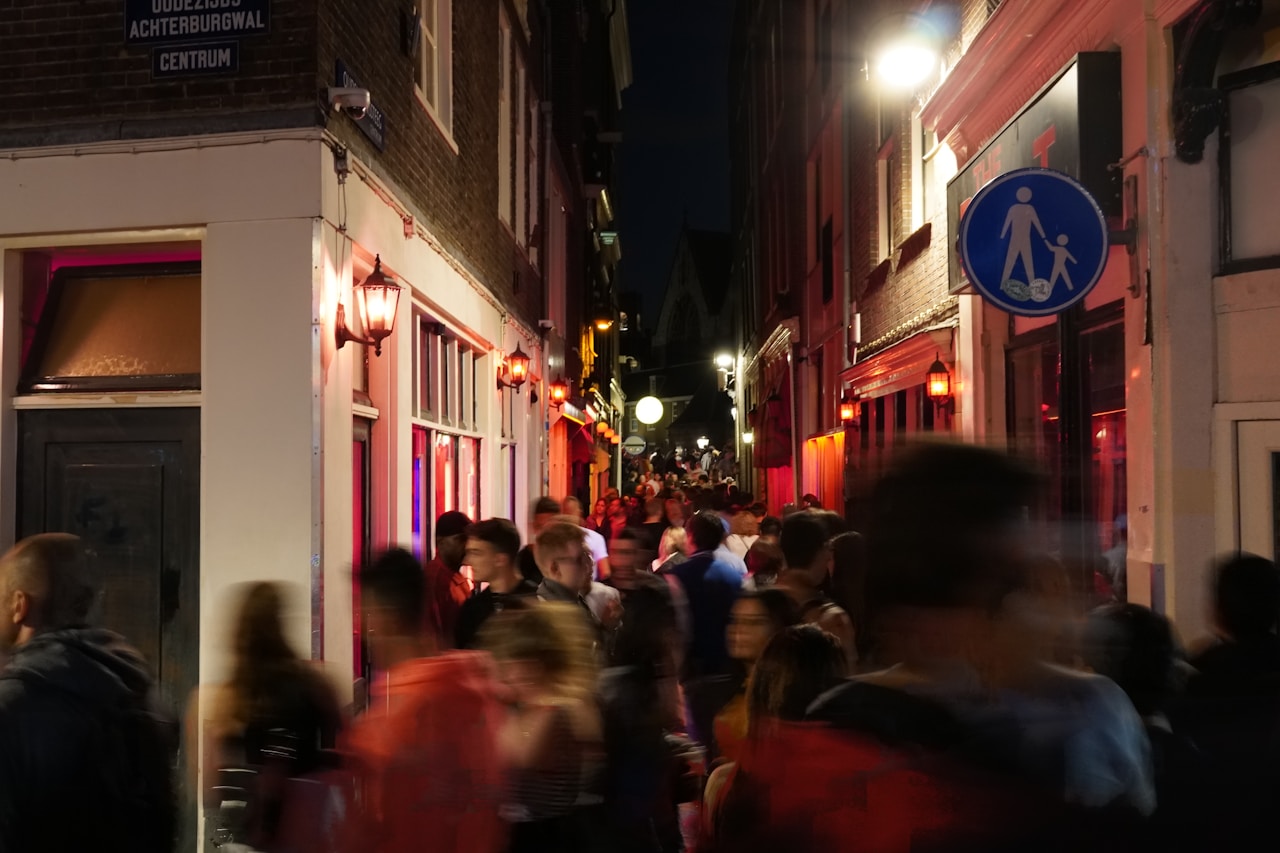
Amsterdam’s public transportation network operates with reduced frequency at night, but still offers reliable options for late-night travelers.
The night bus system, marked with an “N” prefix before route numbers, covers major areas of the city between midnight and 6 AM.
Taxis, rideshare services, and the abundance of well-lit cycling paths also guarantee visitors have safe alternatives for traversing the city after dark.
Safe and Easy Travel Options After Dark

Amsterdam offers reliable transportation options for nighttime travelers through its extensive network of night buses and late-running trams that operate between midnight and 6 AM.
Several ride-sharing platforms, including Uber, function throughout the night, providing convenient door-to-door service across the city.
Licensed taxis, identifiable by their blue license plates, remain abundant at designated taxi stands near major attractions, hotels, and entertainment districts.
Travelers should confirm fares before departure.
Night Buses and Late Tram Services
When darkness descends on the city, the public transportation system shifts to night mode, offering reliable options for late-night travelers.
- Night buses (N-lines) operate between midnight and 6:00 AM, following modified routes that connect central hubs to residential areas.
- Late trams run until approximately 00:30 on weekdays and extend service until 01:30 on weekends.
- All night services require the same OV-chipkaart payment system used during daytime travel.
Ride-Share and Taxi Availability in the Evening
For travelers exploring the city after public transportation scales back, ride-share services and taxis offer convenient alternatives throughout the night.
Uber operates extensively in Amsterdam, with drivers readily available in central areas.
Traditional taxis can be hailed at designated stands near major hotels, entertainment districts, and Dam Square.
Rates increase after midnight, but the convenience provides peace of mind for late-night journeys across the city.
Wrapping Up
Amsterdam’s transportation mosaic reflects the city’s own intricate character, a place where Golden Age canals meet modern mobility.
Like Rembrandt’s masterful use of light and shadow, Amsterdam’s transit options offer contrasts that enhance the whole experience.
Whether cycling like a local through narrow streets or gliding on silent trams, visitors find that traversing this Dutch Venice becomes part of the adventure itself, revealing the city’s soul at every turn.
Most Asked Questions
How do tourists get around in Amsterdam?
Tourists commonly use trams, buses, and the metro operated by GVB. Walking and cycling are also popular due to the city’s compact layout. Free ferries connect certain areas like Amsterdam-Noord.
How much is a 3-day travel card in Amsterdam?
The Amsterdam Travel Ticket costs €30 for 3 days, covering unlimited travel on GVB trams, buses, metro, and includes airport transfers.
Is Amsterdam a walkable city?
Yes, Amsterdam is highly walkable with a compact city center, making it easy to explore major attractions on foot.
Is public transport in Amsterdam free?
No, public transport is not free. However, children under 4 travel free, and various travel cards offer unlimited travel options.
Are there any areas to avoid in Amsterdam?
While Amsterdam is generally safe, exercise caution around Central Station and Dam Square due to pickpocketing. The Red Light District can be rowdy at night.
What is the cheapest way to travel around Amsterdam?
Walking is the cheapest. For public transport, using a GVB day or multi-day ticket offers unlimited travel at a fixed price.
Is it worth it to buy the Amsterdam Pass?
Yes, if you plan to visit multiple attractions and use public transport. The I amsterdam City Card offers free entry to museums, a canal cruise, and unlimited GVB transport.
How do I pay for a tram in Amsterdam?
You can pay using contactless debit/credit cards, mobile devices, or purchase tickets via the GVB app. Cash is not accepted.
Is there a hop-on hop-off bus in Amsterdam?
Yes, City Sightseeing offers hop-on hop-off bus and boat tours covering major attractions. Tickets are valid for 24 hours.

